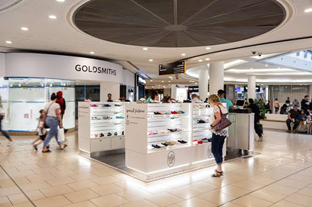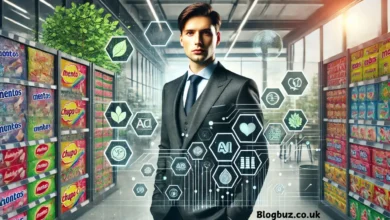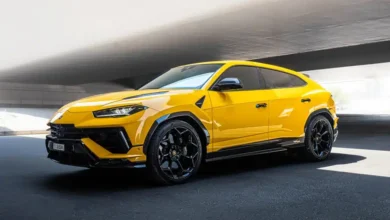Kiosk Interior Design Trends: Transform Your Pop-Up Kiosk Into a Customer Magnet

Pop-up kiosks have evolved over the years as yet another means for businesses to showcase products and services with some buzz in the industry. Nevertheless, as with any lively tool, perhaps pop-up stores are becoming harder to highlight amongst clutter, and interior design swoops in here to save the day. A well-designed space can instantly convert the most generic pop-up into a brand experience that captures customers’ interest and makes them want to return. Kiosk interiors should also incorporate the latest design trends and technologies to create an immersive and engaging environment that speaks to the customers in line with the brand’s values. You can often see pop-up kiosks in the shopping malls presenting new products or highlighting the latest editions of products.
It’s easy to visit kiosks as compared to going into the shops so people get attracted to unique kiosk interior designs. kiosks are usually made in a smaller space while managing everything beautifully. If you see coffee kiosks, they also offer some outdoor seating for like 3-5 persons. In this article, we will explore kiosk interior design trends and how you can transform your pop-up kiosk into something attractive from exotic interiors.
Latest Kiosk Interior Design Trends
Trend 1: Minimalism and Clean Lines
An emerging trend in kiosk interior design is minimalism and clean lines. This aesthetic creates a calm sophisticated look and puts products in the spotlight. The look may be achieved through:
– Geometric shapes that are simple
– Monochrome color schemes
-Clean and little ornamentation
-Wide negative spaces to create a sense of breathability
Trend 2: Bold Colors and Patterns
If you don’t like minimalism, go bold with colors and patterns in your kiosk interior design. This trend is perfect for creating a fun and funky atmosphere that will catch the attention of customers, allure them into the kiosk, and make them want to stay. Here are some elements for creating such an effect:
– Bright, bold colors
– Geometric patterns and shapes
– Textured materials and finishes
– Whimsical accessories and decor
Trend 3: Sustainable and Eco-Friendly Materials
Sustainable and eco-friendly materials are a modern trend for kiosk interiors. The emerging trend is cozy and friendlier to the environment as customers have become sensitive towards the environment more. The following can be used for this cause:
– Reclaimed or recycled materials
– Sustainably sourced wood and bamboo
– Low-VOC paints and finishes
– Energy-efficient lighting and equipment
Trend 4: Interactivity-Immersivity:
If you want to make your pop-up kiosk a customer magnet, then include interactive and immersive experiences in it. The customers should remember it for a long time. This experience should include:
– Interactive displays and technology
– Immersive lighting and sound
– Hands-on product demonstration and sampling
– Instagrammable installations and photography spots
Trend 5: Local and Cultural Influences
Consider localization and culture in kiosk interior design; a personal touch can be given to the end-user. This idea is perfect for a uniquely authentic experience while tapping into the local culture and community. The following influences can be applied:
– Local materials and craftsmanship
– Traditional patterns and motifs
– Community artifacts and decor
– Community initiatives and partnership
How You Can Transform Your Pop-Up Kiosk Into A Customer Magnet?
1. Eye-Popping Visuals
– Draw consumers in with bold, bright colors and eye-popping graphics.
– Create exotic atmospherics with digital displays, LED lights, or neon signage. You can check exotic interiors for great ideas and designs to make your pop-up kiosk an attractive one.
2. Different Types of Experiences
– Include demos, sampling, or trials that are all hands-on.
– Example of interactive technology: touch screens, augmented reality, gamification.
– Create immersive experiences, such as photo booths or “Instagrammable” installations.
3. Clear and Concise Messaging
– Communicate the value proposition of your brand clearly and articulately.
– Easy-to-read wording and short messaging are best.
4. Engaging and Knowledgeable Staff
– Get staff to communicate well regarding the benefits and features of your offerings.
– Spend time getting them to build rapport with customers, including as many questions as possible, as well as giving personalized recommendations.
5. Strategic Location and Placement
– High pedestrian areas with good visibility.
– Make the kiosk accessible and visible for all angles.
– Combine efforts with complementary businesses or events to help drive up foot traffic.
6. Social Media Integration
– Add social media elements, like an Instagram-style background, or allow through digital wall displays, opening up Twitter feeds.
– Brand customer social media posts about their experience using hashtags.
– Track the convo about your brand on social media and jump into any discussions.
7. Limited-time promotions and Offers
– Give urgency to the limited time, which is usually associated with discounts, limited-time offers, special promos, or free special events.
– Offer them exclusive or bundled deals that trigger their urge to buy.
– Use signage and digital displays to buzz your offers.
8. Immersive Branding
– Make your kiosk fit and aesthetic in the branding identity of your brand.
– Use the same branding in all marketing materials, as with packaging, signage, and digital visual displays.
– Create a holistic ambient brand experience that invites senses and emotions.
9. Technology Integration
– Add things like mobile payments, digital signage, and virtual reality to improve every experience of your customers.
Final Remarks
Attracting customers to your pop-up kiosk takes a lot of forethought on the latest kiosk interior design trends. Check exotic interiors for the latest ideas and trends and keep yourself updated. You can apply minimalism and sleek lines, infuse them with bold colors and patterns, materials that are sustainable and eco-friendly, bringing interactive and immersive experiences, and local and viable cultural influences, with all these attributes, you can take a gorgeous line, and functional inside that will lure customers and help keep them coming back for more. Your interior would be considered truly customer-focused if it could also incorporate a flow and navigation plan, product display, lighting and acoustics, technology, and digital integration.




